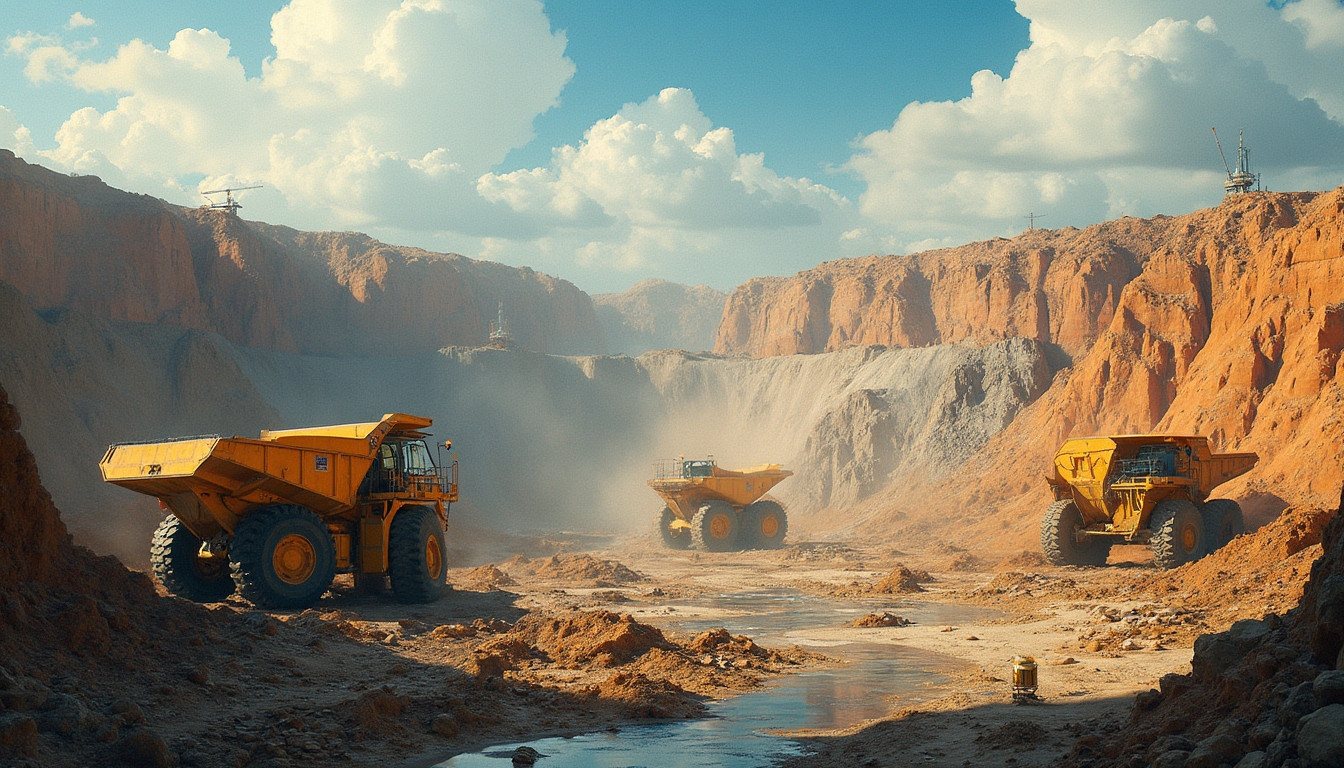Introduction to Ore Deposits 101 Series
The "Ore Deposits 101 Series" is designed to assist non-technical audiences in understanding the complexities of ore deposits. As quoted, "Ore deposits are masses of ore (rocks rich in metal) that are mined to obtain the metals needed for the machines and devices we use in everyday life" (Source: [5]). This series covers critical aspects, including formation, exploration, evaluation, mining, and metal and mineral extraction.
Formation Process
Ore deposits arise through geological processes like hydrothermal and magmatic activities. For instance, hydrothermal deposits are created when hot water interacts with rocks, leading to mineral dissolution and subsequent metal release into the fluid. An example is the Hamersley Province in Western Australia, home to the largest iron ore deposits globally, formed about 1.4 to 1.1 billion years ago during the disintegration of a supercontinent (Source: [1], [3]).
Exploration Methods
In terms of exploration, geologists apply techniques such as drilling boreholes to extract continuous rock samples, known as drill cores. These samples aid in understanding metal concentration processes into ores (Source: [5]).
Evaluation Factors
The feasibility of mining an ore deposit hinges on several factors. These include the amount of identified ore, concentration of the commodity (ore grade), extraction costs, processing expenses, and current market prices (Source: [2]).
Mining Techniques
Mining methods also play a pivotal role. Surface mining is often employed, which involves the removal of overburden to access resources. A notable example is the Bingham Canyon Mine, famous for producing significant quantities of copper, gold, silver, and molybdenum (Source: [2]).
Metal and Mineral Extraction
Iron ore, crucial for creating iron and steel, underscores the importance of resource exploration companies locating new deposits (Source: [1]).
Overview of the 11-Part Series
This series is divided into 11 insightful talks covering various ore deposit types and related processes.
Talk 1: Introduction and Plate Tectonics
Understanding the Earth's structure is fundamental to comprehending mineralising processes. The planet comprises the core (inner solid, outer molten), mantle, and crust. Each layer significantly influences geological activities like Volcanogenic Massive Sulfides.
Talk 2: Mafic Layered Complexes and Kimberlites
Talk 3: Porphyry Deposits and IOCGs
Talk 4: Vein Deposits in Ancient Greenstone Belts
Talk 5: Epithermal Deposits
Talk 6: Carlin Gold Deposits
Talk 7: Volcanogenic Massive Sulfides
Talk 8: Witwatersrand Gold Deposits
Talk 9: Uranium Deposits
Talk 10: Exploration Process and Strategies
Talk 11: Ore Resources, Reserves, and Mining Decisions
Basic Plate Tectonics and Mineralising Processes
Earth's Structure
The Earth's core, mantle, and crust each play distinct roles. The core features a solid inner part and a molten outer section that facilitates geological activity. The mantle assists in plate tectonics and magma production. Most economically viable metal deposits are located within the crust.
Crustal Metal Abundance
Common metals like copper, iron, and zinc exist in average quantities in the Earth's crust. For these metals to be mineable, they must be concentrated to economically viable levels.
Ore Formation Process
Ore deposits typically form through partial melting of the crust or mantle, releasing metals into magma. This magma ascends through the crust, where cooling leads to metal concentration and crystallisation, ultimately forming an ore deposit (Source: [5]).
Mechanisms of Rock Melting
Several processes contribute to rock melting and ore formation.
Subduction
This involves one tectonic plate sliding beneath another, resulting in melting and subsequent mineralisation.
Crustal Thickening
Crustal thickening occurs due to volcanic or sedimentary loading and horizontal compression, also contributing to melting and mineralisation.
Magma Transport and Cooling
Methods of magma ascent include displacement through plastic rocks, assimilation of brittle rocks, and fracture flow near the surface, facilitating magma rise and the eventual formation of ore deposits.
Magma Chamber Formation and Cooling
Key processes in this stage include volatile separation, crystallisation of minerals, and metal partitioning, which dictate the final composition of the deposit.
Ore Deposit Classification by Depth
Ore deposits are classified based on their formation depth.
Deep Crustal Deposits (10-50 km)
These often result from subduction and crustal thickening.
Mesothermal Deposits (1-10 km)
These deposits arise from hydrothermal activities and often contain metals like gold and silver.
Epithermal Deposits (<1 km)
Associated with shallow hydrothermal activities, these deposits often include precious metals.
Surface Deposits
Typically formed via erosion and sedimentation, such as placer deposits.
Specific Deposit Types and Associated Metals
Mafic and Ultramafic Intrusions
These are associated with metals such as chromium, platinum, and diamonds, along with nickel-copper sulphide deposits.
Porphyry Domain
Commonly linked with valuable metals like copper, molybdenum, gold, iron, and uranium, as seen in the Cadia Ridgeway gold-copper deposit.
Mesothermal Domain
This domain is characterised by deposits containing metals like copper, lead, zinc, along with precious metals.
Epithermal Deposits
Typically rich in precious and base metals such as gold, silver, copper, lead, and zinc.
Surface Deposits
These involve placer and secondary deposits, being major sources for gold, platinum, and other precious metals.
Key Takeaways
Understanding natural metal concentration processes is vital for locating minerals and improving mining opportunities. The melt-rise-cool process is responsible for the majority of ore deposits.
The two-stage concentration mechanism reveals that partial melting followed by cooling and partitioning leads to ore formations. Various deposit types result from differing source melts, depths, and depositional environments. This can affect strategies like gold investment strategies and gold mutual funds, crucial for those understanding market dynamics and seeking profitability in the current resource sector.
Next Talk Preview: Mafic Layered Complexes and Kimberlites
Significant insights will be shared about the geological processes forming mafic layered complexes and kimberlites, revealing aspects that impact the mining industry.
Ready to Explore the Next Big Ore Discovery?
Unlock real-time insights and AI-driven alerts for major mineral discoveries on the ASX with Discovery Alert. Whether you’re new to investing or a seasoned trader, stay ahead with simplified data and valuable opportunities. Start your 30-day free trial today to transform the way you approach mineral investing. Discover Now!



